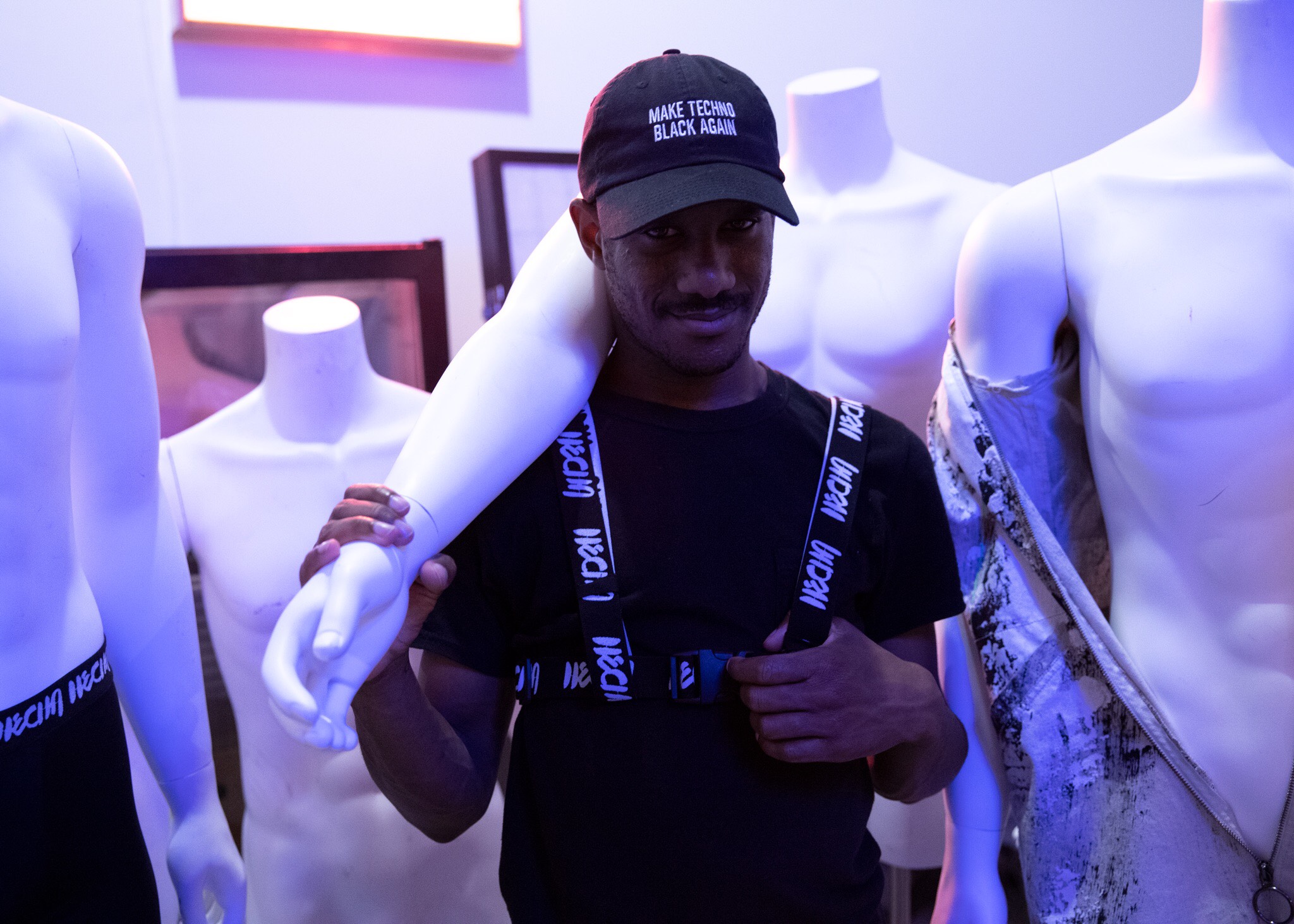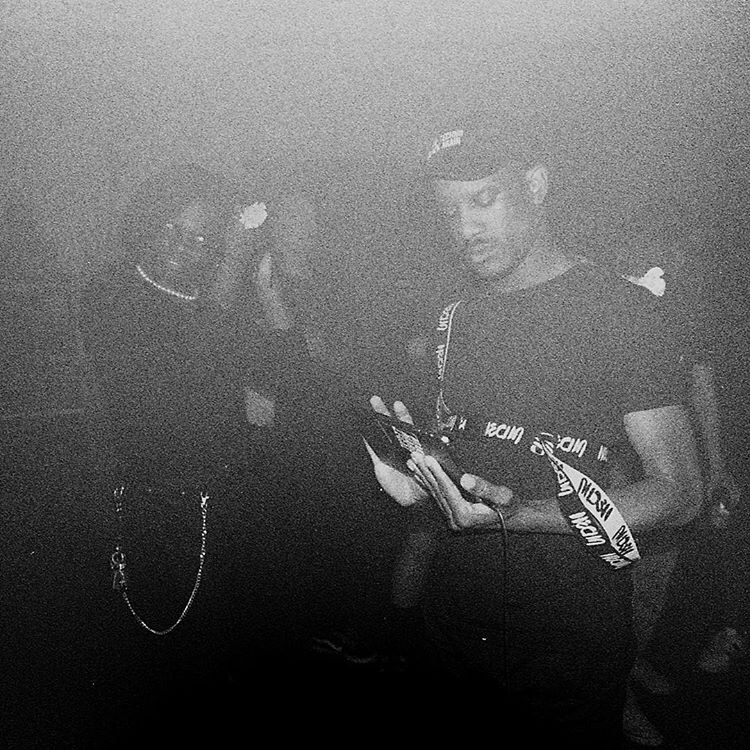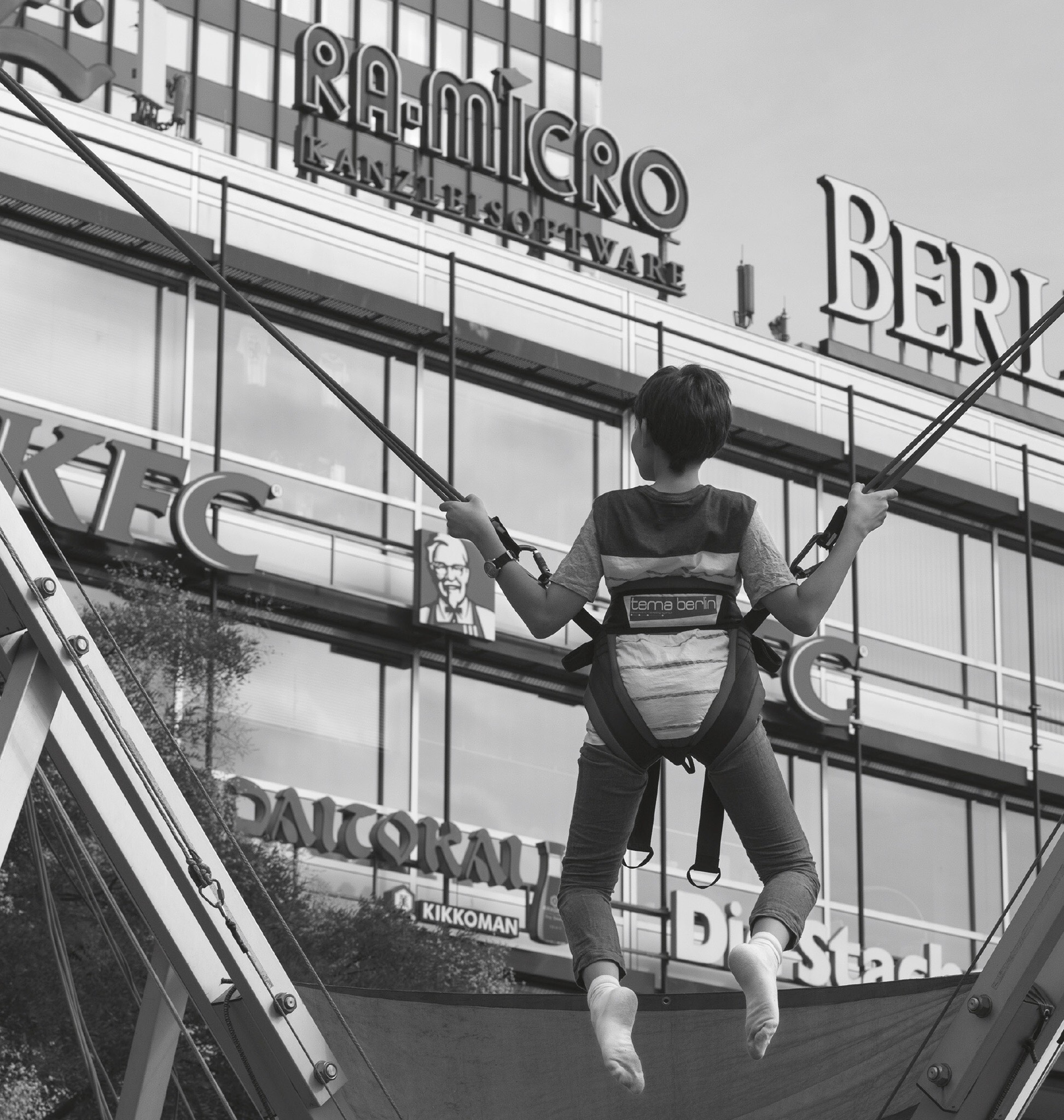Rhythm is a Dancer, A Conversation with DeForrest Brown
Contributors
The Architectural Gaze Goes Clubbing
Anna Sagström: In your biography you describe yourself as a “Rhythmanalyst”, referencing Rhythmanalysis: Space, Time and Everyday Life, the book of essays by the French urbanist philosopher Henri Lefebvre in which he analyzes rhythms of the urban landscape as well as the human body in order to study space and time in capitalist industrial life. Your latest mixtape together with artist Kepla ‘The Wages of Being Black is Death’ is described as a comedy following a “slothful and downtrodden Black Body as it drifts amongst the ambient commons of the Whites”, establishing rhythms as deeply political and social phenomena. To you, how are rhythms structured and experienced? What power relations do rhythms secure? What forms of exploitation and exclusion are involved in everyday rhythms, and how does this traverse the spatial lines of the city?
DeForrest Brown: When considering rhythm and life under a capitalist industrial system I often think of the phrase “it is what it is”. It’s the name of a Rhythm is Rhythm (Derrick May) track, but also a recurring deterministic statement in Amiri Baraka and Sun Ra’s A Black Mass, a play adaptation of the Nation of Islam’s myth of Yakub and the invention of Whiteness. Like Sun Ra, I grew up in Birmingham, Alabama, a city that was a primary center of steel production for America and the heart of the Black Civil Rights Movement. Being a Black male from the Deep South, I feel that I never really had the choice to be unaware of how America operates as a system built to dominate and extract. The history and structures of Jim Crow era racial segregation, for me, defines Birmingham’s urban planning and the distribution of wealth and essential resources like education. So, leaving Alabama to live in New York was more or less an exercise in traversing spatial lines and experiencing new rhythms as a matter of personal research to gain a sense of self-awareness in the techno-industrial ecosystem of America.
The mixtape with Kepla was in a lot of ways a response to living in New York amongst the most White people I’ve ever been around in my life. The general ontogenic/racial difference between me and those in my environment in conjunction with the obvious difference of class made me particularly sensitive to the rhythm and inherent distribution of power that links an American to the macro-flows of capital. The gestures and social relations of “Yankees” are remarkably different than those of White people down South and are based entirely in an abstract game of paid and owed attention. The comedic elements of the tape was a play on and coping mechanism for the currency and exchange rate of power that appears to be latent in urban cultural centers and seemed to invariably put me in uncomfortable, compromising situations frequently to the benefit of a White person. Interactions with the Whites in New York involve a complicated and Pavolvian choreography that reminds me of a cheapened version of Greek theater culture with aspects of “escape-the-room” style games––perhaps this is a larger metaphor for how Blacks and Whites are designed by and to be funnelled through America as both laborer and consumer at different respective levels with completely different end results.
In short, my iteration of rhythmanalysis comes out of this exact difference in social relations as an attempt to hack and inhabit spaces that I could sense were not intended for a Black male. Lefebvre’s understanding of the critical dynamics, mechanics, and intended extractive function of everyday life became really useful in mapping out the concerning dynamics of day-to-day interactions in a country built on the literal subjugation and trading of human bodies as automated labor.

Photo by Ting Ding
AS: Lefebvre differentiates between “abstract space” (the space of capitalism, manipulated and governed by authorities) and “social space”, the space produced by complex interaction of people and events in the pursuit of everyday life. Shifting the conversation from the spatio-physical to the architecture of the digital web and the explosion of music streaming platforms and video-streamed club nights, the online landscape is being cemented as one of abstract, algorithmically driven capitalist space under a spurious disguise of social space. Similar to how urban planners designed the city to the benefit of the capital and social stratification, big data facilitates the production of a hierarchically ordered digital structure where attention and space is given to the listeners who offer the greatest advertising value. In music this often means a skewing of representation and historiography favoring the cultures and stories making up the mainstream. You are promoting the “Make Techno Black Again” campaign; when and where did techno become non-black?
DB: Capitalism is an intrinsically Eurocentric system designed to skew and instrumentalize for the sake of an undesignated ruling class. Lefebvre’s thoughts on abstract and social space points to the way in which capitalism performs its extraction: a “social space” is kinetic and open to be filled or emptied; whereas an “abstract space” isn’t so much empty as much as it is irrevocably hidden in flux, plucking the strings of and directing the former. Western culture as a mass accumulation of outsourced instrumentation and production prefigures articles of everyday life as a prolonged and labored pivoting on a narrative seam of fictive progress for another’s vision. Club culture, in opposition, is a commons of free expression outside of Western progress, acting as an ungirdled blank space and open zone latent with excess energy, bubbling on the outside of politics while forever reimagining political boundaries. When framed in dialectical terms, work —which is synonymous with progress and goodwill—is done during the day, while clubbing is done at night with little regard to progress. The hierarchy of culture and value is then divided into frames of moments of lived experience that more often than not says something about you as a consumer or producer. If you’re a producer of the club night, you’re still working and circulating currency; but if you’re a clubber you’re consuming at an hour that is intended for rest for another hard day at work. We can split this hierarchy again into racial terms but, given the clear and ideologically necessary economic disparity between Blacks and Whites in America, the notion of both fitting into slots of worker and clubber completely bypasses the structural reasons why either group would be in either position.
But all the same, online media companies like Boiler Room, Mixmag, or Resident Advisor use live streaming and public consensus of clubbing “social spaces” as a means to increase the value of its function, auctioning it off to voyeurs whose second hand experience is also being documented and extracted into the “abstract space” of their institutional bank accounts—which ironically never seems to have enough capital to pay producers, writers, and experiential victims for this subtle form of a heist. Essentially, clubbing as a transcendent and potentially rejuvenating experience is taxed and sold at a low price into an ambient commons, with the intention to bait voyeurs into moving to urban centers to invest further in the sacrificial experience. The “mix economy” as I call it is an interesting component of the generally unregulated music and entertainment industry. DJs (and sometimes producers) purchase (or illegally download) other people’s music from platforms such as Beatport or Bleep and place them on aural assembly lines. The mix operates as a kind of free sample of music for consumers by an uncompensated tastemaker. Even beyond the scope of the Spotify algorithm, the DJ as a position in the music economy works a lot harder and more efficiently than platforms at practically no cost. When considering music publications as a kind of consumer menu or catalog, they suddenly start to look like they’re selling profiles of artists on a digital auction block more than neutral documentations of cultures and expressions. The scoring of albums; the naming of genres; and the presenting of artists, releases, and mixes to an audience forcibly determines the value of a personal, cultural product. This process is obviously extractive as there is no direct overhead from the publications or platforms besides the amount of initial money invested in the companies in the first place. This is the model of a publicly and somehow legally sanctioned scam.
The “Make Techno Black Again” campaign works in direct opposition to this business model in that it is a readymade object that bears a memetic syllogism. To assert that techno is Black is to insist that a fundamental component of the highest equitable product in the dance music economy is in fact stolen goods. As mentioned prior, America and Western culture is designed to section off, extract, and horde resources to gauge and wager its own ideological value against other designated cultures of the world. James Stinson of Drexciya in an interview once presented the idea of “the Caucasian persuasion.” He asks a central question about Richie Hawtin/Plastikman that I’ve never gotten an appropriate answer to:
“Why do Richie and his Plus 8 family come down here and throw parties in downtown Detroit? He brings in all these kids from the suburbs and from Canada, and that shows a lack of respect. I’ve been to every one of those parties and I’ve never heard an Underground Resistance record, a Cybotron record, a Model 500 record or an Eddie Fowlkes record. It’s a total lack of respect, and it’s got to stop.”
“Make Techno Black Again” started as a meme made by Luz Fernadez who co-founded a sustainable gender-flexible apparel line HECHA / 做 with my partner Ting Ding, who also runs its instagram account as a sort of educational platform. As a kind of face of the “brand,” I try to wear the hat casually and imply its validity through my own research and development as a Black artist and critic working at odds with the current White Eurocentric institutional understanding of electronic music. I actually debuted the Speaker Music project with a retrospective mix designed to be an ambient soundscape for the hat as well as a self-reflective and non-linear tour of Detroit techno as a machine of momentum and an expansion of black music. 20% of the proceeds also goes to Living Arts, a youth-oriented educational arts program based in Detroit, as a way to redistribute some of the currency to a new generation of artists and musicians. “Make Techno Black Again” s ruptures the conjunctive imagery of a White person dancing to techno and quite literally replaces it with a Black body. Whatever the reaction is, the thought is now an afterimage and strips techno as a genre of music of its essential neutrality as an item of leisure consumption and calls into question what product is actually being distributed and sold.

Dreamcrusher (left), DeForrest Brown, Jr. (right) Photo by Richard R Ross
AS: You mention you’re interested in implementing time constraints around your live improvisations, even when time is “free” and available. I do the same with the record label I run with my collaborator Daniel. We strictly limit all of our releases to 4 or 8 minutes, despite that they exist online and are not tied to a physical medium. What is your relationship to ‘music time’? Does it align or contrast with linear time?
DB: I quite like Country Music’s 4 or 8 minute structure for the fact that it sets a standard for both the listener and producer to communicate within. To be realistic about the digital quarry that we all live in, time is very valuable and quite often extracted from us against our will. here should be an empathetic medium through which a producer can express and a consumer can participate. I’d love to create music in a social setting for hours at a time, but I’m fully aware that attention spans aren’t exactly as long as my out-of-body experience with sonic architecture. I spend a lot of time considering the conditions under which I’m expected to produce and use those conditions as a way to negotiate with the audience. If I’m not bored of the music, I would hope that the audience is not bored and that there is a deeply reciprocal relationship that’s established by this collective listening.
In regards to our previous statements about the largely speculative value of online mixes or even just presenting music within the club space, I try to instead fill the allotted space-time with audio that regards sound as a fabric able to be folded and re-engineered to the benefit of the listener. Part of this practice is my attempt at moving dance music away from the four-on-the-floor standard to a more open-format that allows for expression beyond that of a linear unfolding of recognizable sonic revelations of scaled dynamics along a y-axis.
In my performance praxis Rhythmatic Music for Speakers, I expand my alias of Speaker Music into a platform that is presented––I produce music for speakers, and I embody it by being present in the moment with listener. I typically play granular and rhythmic material on an iPad via a long aux cord for mobility, but at times I’ll share further abstractions through live mixing with Ableton. The project is modular so that I can be as social or as orchestral as I need to be. I reference percussionists Steve Poindexter and Rashied Ali as a way to imply a “chronopolitical” engagement not only with a staged moment but also with the history of Black music as an inspiration for ecstatic movement. I try to draw a direct line between Ali’s “multi-dimensional” drumming techniques and Poindexter’s intuitive filtering and tweaking of drum machines and keyboard synthesizers through free association and improvisation.
AS: In 2017 you collaborated with the Berlin based artist, musician, and writer Steven Warwick on the project Elevator to Mezzanine at ISSUE Project Room, a club environment in a staged department store, where, according to the press release, you examined corroding identities and collapsing economies. What influenced you to do a project on the commercialized club?
DB: As we approach the fourth quarter of the last year of the 2010s, the American retail industry is crumbling under the weight of lackluster consumers without style or taste. I say this with a close eye on the socio-economic organization of American class and influence. In conjunction with socially and fiscally inept business and marketing teams who rely far too heavily on data-driven performance indicators, the worst truth of late capitalism I feel is that Americans aren’t competent enough to actually perform capitalism in a way that defines who we are.
The earliest conversations that Steve and I had about Elevator to Mezzanine came while traversing multiple types of consumer spaces (department stores, galleries, clubs) and discussing how people and their social value filled those spaces and, to an extent, produce value for those spaces. Paul Fussell’s 1982 book “Class” characterizes the American class and status system as inherently more complex than the assumed three classes of “upper, middle, and lower,” and within this more detailed system comes a more politically motivated space.[FN] Steve and I were really interested in understanding how consumer spaces and the sub-class ideologies congeal in America. So we decided to propose a war on the idea of style and neutral individualism, making our own lookbook and conceptual store with the help of designer Enver Hadzijaj and photographer Ilya Lipkin. Elevator to Mezzanine offered us a sort of vantage point or off-the-grid perspective of American culture, and our activations display an awareness of the nested propagandistic culture industry that offers us options to “choose/purchase” who we are within a simulation of a democratic society.

Taken from the Elevator to Mezzanine look book Photo by Ilya Lipkin